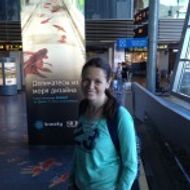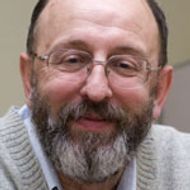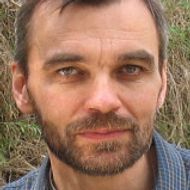- A
- A
- A
- ABC
- ABC
- ABC
- А
- А
- А
- А
- А
-
-
Departments
- International Laboratories
-
Educational Programmes
- Bachelor's Programmes
- Master's Programmes
- Doctoral Programmes
- Math in Moscow Programme
- REM and Summer University
-
Faculty
119048Moscow, Usacheva str., 6
phone/fax: +7 (495) 624-26-16
phone: +7 (495) 916-89-05
e-mail: math@hse.ru

Geometric Topology Seminar: A. Lightfoot
Dear all,
You are cordially invited to attend the next meeting of the Geometric
Topology Seminar.
http://www.mathnet.ru/php/conference.phtml?confid=192
-----
Geometric Topology Seminar
Math Department of the Higher School of Economics (Usachyova, 6)
Room 108
[For external visitors, you may be required to present identification
(such as a passport) at security. You are welcome to call Ash
Lightfoot (+7 925 8897129) in the case of any difficulties.]
Thursday, March 15, 14:00
Speaker: Ash Lightfoot (HSE)
Title: An unlinking theorem for link maps in the 4-sphere
Abstract:
In this talk, having placed one component f_1 of a link map (recalled
below) into a standard form, we construct immersed 2-spheres
representing generators for the second homotopy group of the
complement of f_1 in the 4-sphere. These 2-spheres are constructed
using accessory disks and Whitney disks for the immersion f_1. Our
first application of this construction is to compute the image of
Kirk's invariant (which was first proved by Kirk in his foundational
work). We then establish criteria, in terms of Wall intersections, for
a link map to be link homotopically trivial. These criteria will be
seen to be relatively weak; indeed, the proof of their sufficiency
will require an application of Freedman's embedding theorem.
--
This is the fourth in a series of talks in which we give a careful
exposition of a recent ground-breaking paper of Rob Schneiderman and
Peter Teichner (arXiv:1708.00358).
A link map is a map of a pair of 2-spheres into the 4-sphere such that
the image the 2-spheres are disjoint, and a link homotopy is a
homotopy through link maps. That is, throughout the homotopy each
component may self-intersect, but the two components must stay
disjoint. Schneiderman and Teichner resolved a long-standing problem
by proving that such link maps, modulo link homotopy, are classified
by a certain invariant due to Paul Kirk. (This is a higher-dimensional
analogue of the classical result in knot theory that the linking
number classifies two-component links up to link homotopy.) The goal
of these talks is to obtain a complete understanding of the proof of
this result.
- About
- About
- Key Figures & Facts
- Sustainability at HSE University
- Faculties & Departments
- International Partnerships
- Faculty & Staff
- HSE Buildings
- Public Enquiries
- Studies
- Admissions
- Programme Catalogue
- Undergraduate
- Graduate
- Exchange Programmes
- Summer Schools
- Semester in Moscow
- Business Internship
-
https://elearning.hse.ru/en/mooc/
Massive Open Online Courses
-
https://www.hse.ru/en/visual/
HSE Site for the Visually Impaired
-
http://5top100.com/
Russian Academic Excellence Project 5-100
- © HSE University 1993–2025 Contacts Copyright Privacy Policy Site Map
- Edit





